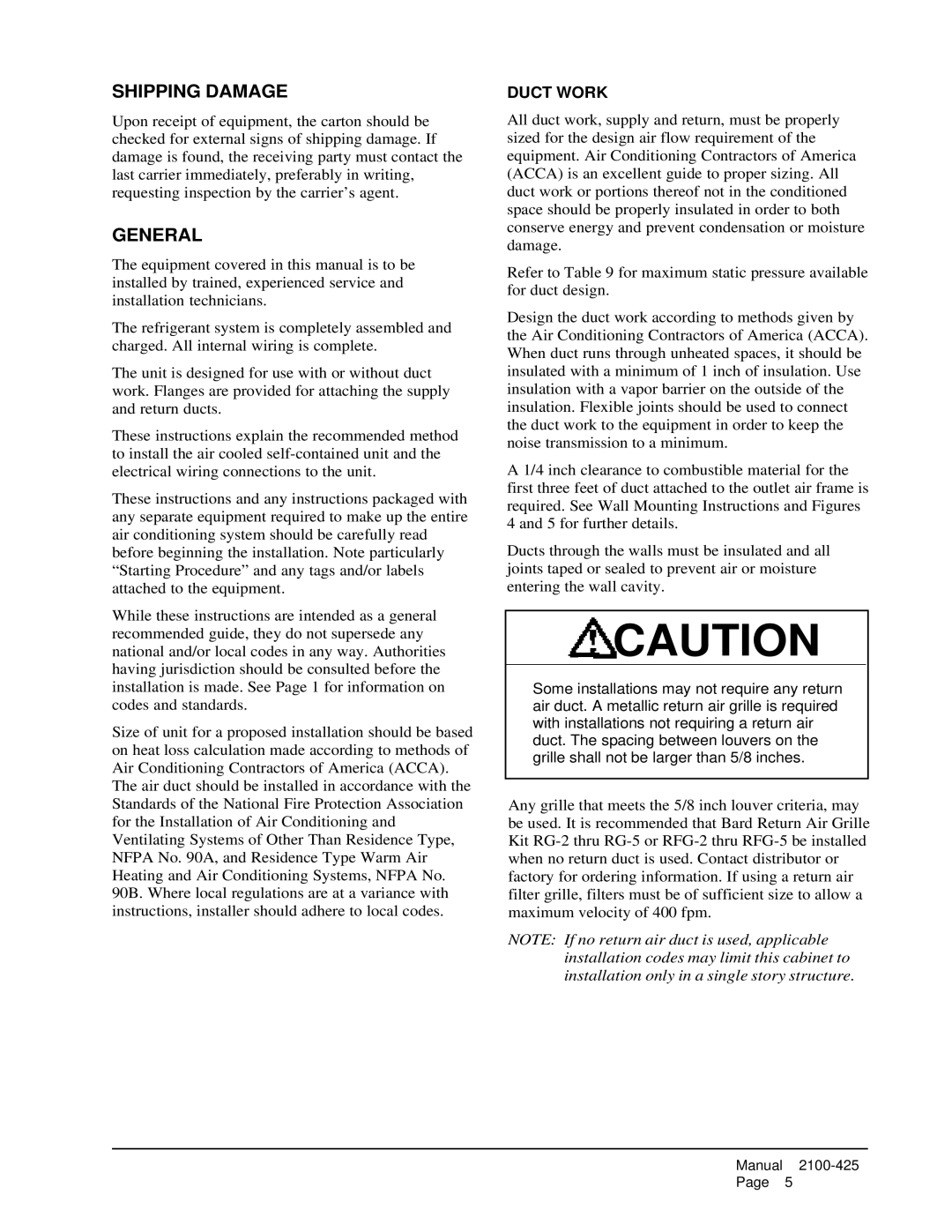WA701-C, WA701-B, WA611, WA721, WA702-A specifications
The Bard WA702-A, WA721, WA611, WA701-B, and WA701-C are part of Bard's renowned series of wall-mounted HVAC units designed for superior heating and cooling performance in various applications, particularly in the commercial and residential sectors. Each model boasts distinctive features and technologies that cater to specific comfort needs and energy efficiency requirements.The Bard WA702-A model is noted for its energy-efficient engineering. It utilizes advanced scroll compressor technology, ensuring quiet operation and improved reliability. The unit’s high seasonal energy efficiency ratio (SEER) allows it to operate effectively in a variety of climate conditions, providing economic savings on energy bills.
The WA721 model takes efficiency a step further by incorporating Bard’s innovative electric heat option, which delivers rapid heating capabilities. This model is suitable for colder climates where quick temperature adjustments are essential. Its compact design allows for easy installation without compromising space, making it ideal for both residential and light commercial settings.
The WA611 is engineered with versatility in mind. This model supports multi-zone heating and cooling, allowing users to adjust temperatures in different areas independently. Its advanced controls facilitate optimal comfort while minimizing energy consumption. The WA611 also features an integrated air filtration system to enhance indoor air quality, which is a significant consideration in modern HVAC systems.
For those seeking dual functionality, the WA701-B and WA701-C models stand out with their remarkable heating and cooling capabilities. Both units are equipped with Bard’s patented thermal expansion valve (TXV) that optimizes refrigerant flow for improved efficiency across varying loads. The WA701 series includes robust insulation to reduce noise levels and enhance performance during operation.
In addition to their energy-efficient and space-saving designs, all models feature easy-to-use digital controls, enabling users to adjust settings conveniently. Moreover, the units are constructed with durable materials, providing long-lasting performance even in demanding environments.
Overall, the Bard WA series represents a blend of innovative technology, efficiency, and user-friendly designs that address the ever-changing needs of heating and cooling in contemporary spaces. Whether it’s for residential purposes or commercial applications, these models stand out for their promising performance and reliability, ensuring comfort and satisfaction for users.

